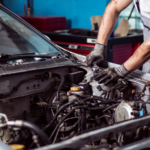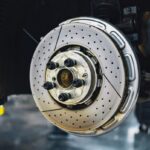When it comes to SUVs and pickup trucks performance, off the road is what they excel at. This is mainly thanks to their 4×4 system. Whilst a 4 wheel drivetrain is more common with pickup trucks such as Isuzu’s D-Max, it is not the only thing that gives its powerful performance. The exhaust system is another component or set of components that affect a vehicle’s performance levels.
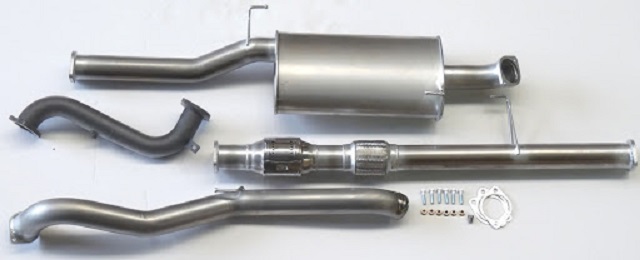 Source:genieperformance.com
Source:genieperformance.com
Since it’s directly tied to the engine, the exhaust system is responsible for making sure it runs smoothly. By having your Dmax exhaust upgraded with a performance-oriented one, you can improve the vehicle’s carbon footprint as well as the exhaust note. Fuel economy can be affected too, as well as horsepower. This can be done in your own garage as long as you gather the right equipment and find the right DMax exhaust upgrade.
How to Replace Your Exhaust System
First of all, make sure to get informed about all your available option. You can purchase a stock model, or go for an aftermarket one that’s more affordable and often has room for personalisation. If you go for an aftermarket performance exhaust, there are some things you should know before buying. Once you’re certain you’ve made the right choice you can proceed with the installation.
What You Need
For every vehicle replacement and modification to be successful, you need to have the proper tools and equipment otherwise you’re just wasting time. A Dmax exhaust upgrade requires you to have safety glasses, gloves, and four safety jack stands. You also need to get a floor jack, ratchet, 6 pointed sockets from 10 mm to 19 mm and penetrating oil. All the other hardware will come with the new Dmax exhaust.
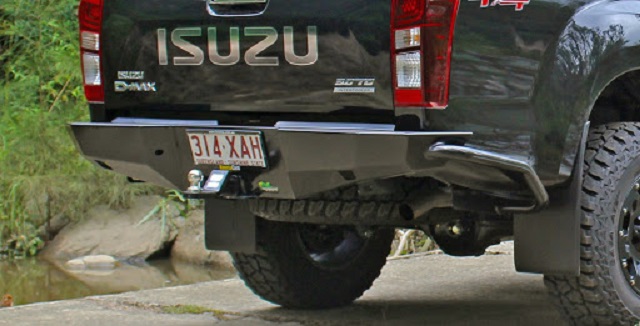 Source:ironman4x4.com
Source:ironman4x4.com
Installation Steps
- You should first start by parking your D-Max on a flat, stable surface and turn it off. Then you’ll want to raise the vehicle safely with the floor hack and safety stands. Then, spray the existing hardware with penetrating oil and let them soak for about 5 minutes.
- After those 5 minutes have passed start removing parts with the muffler being first in line. You usually need a size 6 pointed socket together with a ratchet to get the muffler down. First, remove the hardware holding it which has two bolts and then slide the muffler out.
- Next you need to remove the catalytic converter which is at the middle of the exhaust and held by a flange. Before you get to the flange though, make sure to remove the middle part of the exhaust from the catalytic converter. It’s usually bolted on there. The flange has either two or three bolts and once removed, you just slide the piping from the rubber hangers.
- After that is finished, you’ll need to remove the rubber hangers too and replace them with new ones. Once that’s done, get the new piping and slip it on to the new rubber hangers. Do the same with the new muffler.
- Once you’ve installed the new muffler and catalytic converter, you’ll need to put on the new gasket. Fasten it using the hardware that came with your new Dmax exhaust upgrade and tighten it by hand. Then, fasten the flange that joins the middle piping to the muffler and again fasten by hand.
- When this is done, make sure to align the placement of the system by tightening the bolts down at every flange. Once you verify that the exhaust is hanging freely on the hangers you’re almost there. While you have your Dmax in the air, double-check every flange, bolt, and hanger and make sure that the exhaust system works well.
- To do this, start your vehicle and listen to your new Dmax exhaust. Check each flange if its leaking gas and feel the exhaust (don’t touch) for any air escaping it. If everything is working as it should and there are no leaks, use the floor jack to get your vehicle safely to the ground and you’re done.
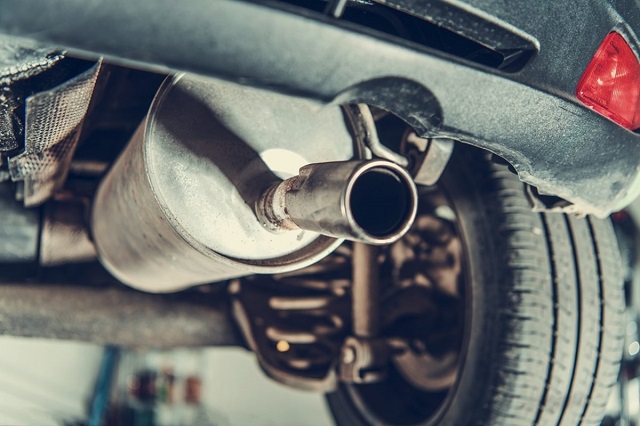 Car Emission Test Theme. Modern Compact Car Muffler Closeup.
Car Emission Test Theme. Modern Compact Car Muffler Closeup.
How Often Should Exhaust System be Replaced?
Your vehicle’s exhaust system doesn’t need a lot of maintenance if it’s brand new. You need to take care of it though, especially if it has a lot of kilometres on it. The majority of cars won’t need any sort of exhaust repair or modification anywhere from 8 to 10 years since their release. But there are some things to keep in mind if you want to know when it’s time to replace it.
How Do You Know If You Need a New Exhaust System?
The first sign you will see or rather hear when the exhaust system is due for a repair or replacement is an increase in engine noise. The exhaust system is what keeps it down and if it isn’t or/and you hear loud rumblings, it means that there is a leak which can be in the need of a repair or a new system.
The leak can occur near the manifold or anywhere at the joints. You will also notice a decrease in fuel efficiency as the engine is going to be struggling to keep your vehicle running at its best. This is due to the exhaust running at a higher temperature than usual causing the need for more fuel as it will burn faster.


